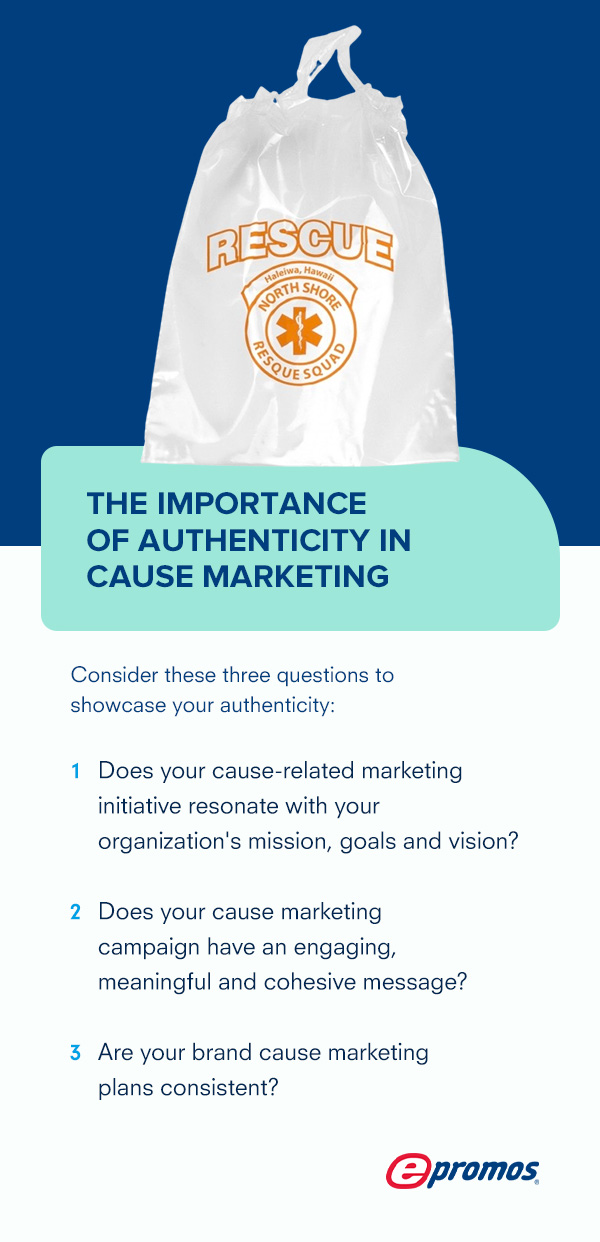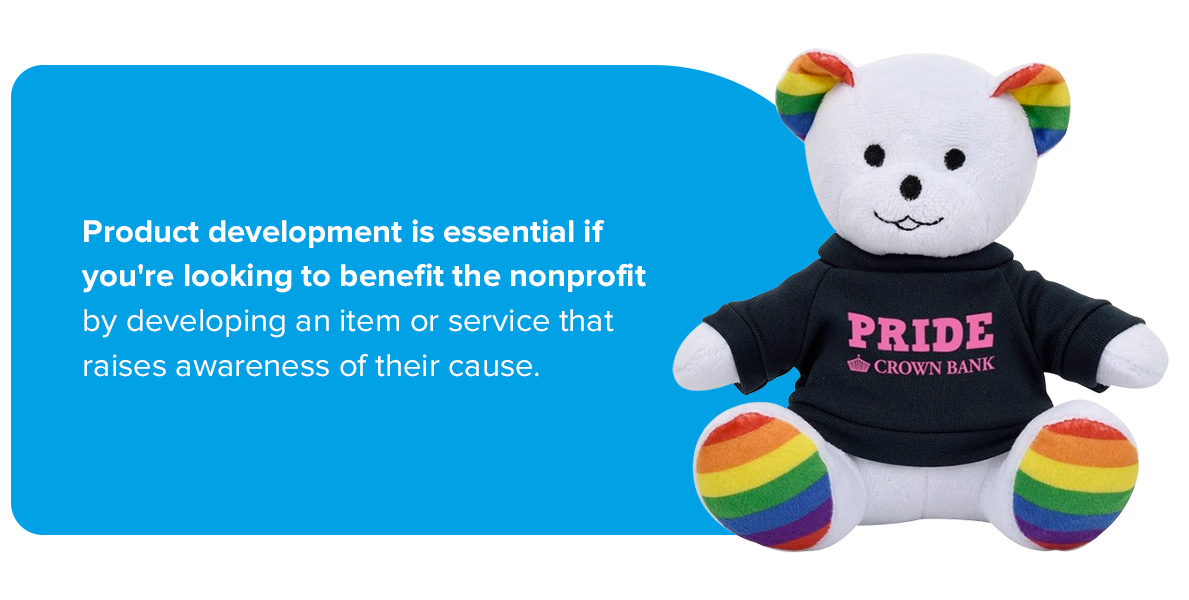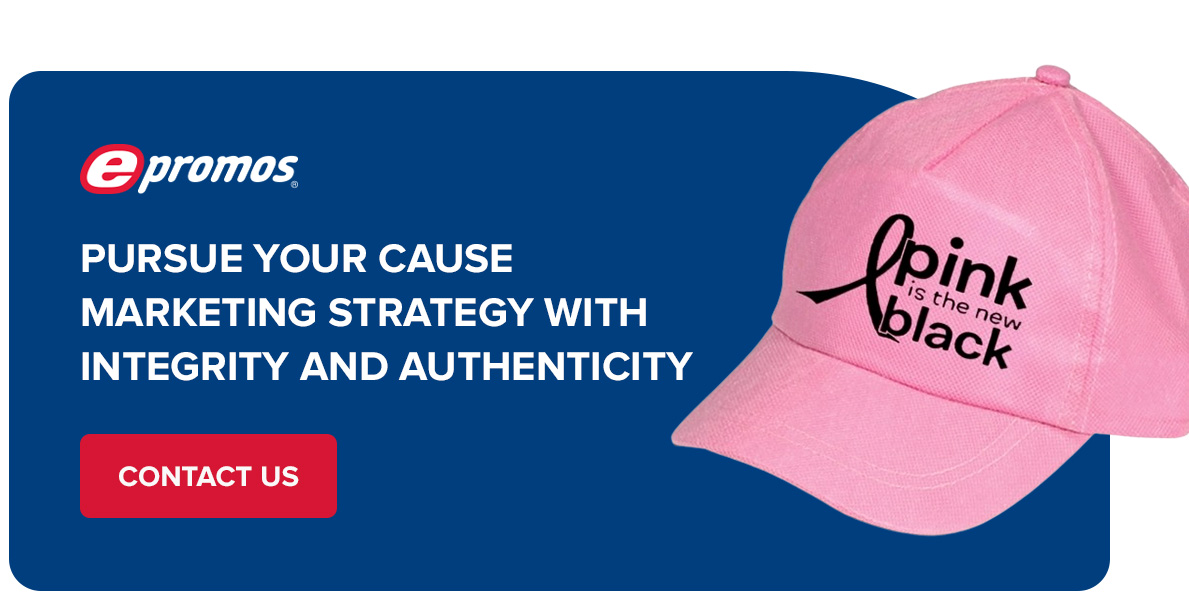09/12/2023
Your Guide to Authentic Cause Marketing
Cause marketing is more than a marketing strategy. It’s an opportunity to make a real difference. Cause marketing campaigns inspire consumers to take action and occur when businesses help nonprofit organizations that dedicate themselves to positively impacting a cause. To effectively assist these nonprofits, for-profit organizations need to follow cause marketing best practices. This guide provides you with all you need to know about cause marketing.
What Is Cause Marketing?
Cause marketing — or cause-related marketing — is a collaboration between a nonprofit and a for-profit organization for mutual benefit. It usually involves promoting a product that will boost sales, awareness and donations. The nonprofit can benefit from the collaboration by receiving a portion of the company’s sales for that product for a set period. For-profit organizations will benefit from positive publicity and increased sales.
Cause marketing campaigns require you to balance social responsibility with business benefits. You need to find the right balance to implement cause-related marketing effectively. Here are five key principles to keep in mind:
- Find a respected cause you believe in: To create a successful campaign, you must choose a legitimate charity. Take time to verify the nonprofit’s credentials, and choose a cause you and your employees are passionate about.
- Ensure the cause is relevant to your industry: When the cause aligns with your company’s values, your target audience will know that your campaign is sincere and may contribute to the cause long after your campaign ends.
- Show your sincerity: While monetary donations are helpful to nonprofits, creating promotional materials and donating products or services shows your audience that you genuinely care. It also allows you to create a strong association with the nonprofit.
- Work directly with nonprofit members: To maximize promotional benefits, collaborate with members of the nonprofit organization to create effective marketing campaigns. You may find that people who previously only cared about the cause will also start taking an interest in your business.
- Inspire your target audience to take part: Add real purpose to your marketing campaign by encouraging your audience to donate, spread awareness and volunteer at events.
The Importance of Authenticity in Cause Marketing

It’s essential for brands to partner with a nonprofit in line with the charitable causes they believe in. One study found that 70% of consumers say it’s important for brands to stand up to political and social issues. The same study also mentioned that consumers were more likely to switch brands based on their stance on a political or social issue.
For this reason, you want to establish and reinforce your brand purpose through actions. Consider these three questions to showcase your authenticity:
- Does your cause-related marketing initiative resonate with your organization’s mission, goals and vision? When your brand and the cause clearly resonate with one another, the campaign looks more realistic and authentic. This also creates an opportunity for your marketing team to work directly with teams in the nonprofit organization. This allows you to foster a more effective working environment.
- Does your cause marketing campaign have an engaging, meaningful and cohesive message? A compelling message will help your company connect with consumers who believe in what your business stands for and have similar values. To ensure that your message about an issue gets attention, you must convey this message across all the appropriate channels.
- Are your brand cause marketing plans consistent? When your brand consistently engages with a social issue, consumers will understand that your efforts are genuine. This authenticity with show them that your brand is trustworthy and honorable.
How to Identify the Right Cause to Support
Donating time and money to a cause you believe in may help you feel more fulfilled and allows consumers to see your brand as socially responsible. In turn, you could strengthen your clients’ loyalty to your brand. To achieve this, you must identify a cause that reflects your business values and goals.
1. Research and Understand Different Social Causes

The first thing to do is research causes and nonprofits you can support. As mentioned, they should somehow align with your business and be reputable. Once you have a list of nonprofit organizations you’d like to support, visit each one and volunteer for a day.
When you’re passionate about a cause, you may feel moved by the work volunteers do and the affected individuals you meet while volunteering. After spending time at each nonprofit, you’ll have an understanding of the right cause to support.
2. Assess Alignment With Company Values and Mission
Aligning yourself with a cause you are passionate about shows your authenticity as a brand. It also makes it easier for you and your chosen nonprofit to target the right audience. An ideal place to start is by asking your employees what causes they care about.
The cause you choose should match your company values and employee majority. Secondly, you should take an action-over-aid approach, which involves helping through activity over monetary donations. Lastly, provide assistance to a cause to help nonprofits rather than to gain publicity. If done right, your company may benefit from good publicity as a reward for your support.
3. Consider the Relevance and Impact of the Cause to Stakeholders
Discuss with your PR and marketing teams what will move your stakeholders. Cause marketing creates an opportunity for your company to connect with external stakeholders on a deeper level. These stakeholders include volunteers, vendors, the board of directors, customers and shareholders.
You may be able to understand what’s valuable to them based on your industry, or you can take a general approach. A safe option is to support education, especially in underserved communities.
Examples of Cause Marketing and Causes to Support
There are several causes for companies to support. To help you get a better idea of the types of social causes your company could support, here are four real-life examples of cause-related marketing campaigns:
Marks and Spencer’s Everyone Can Help Someone Campaign
During 2019, M&S collaborated with the nonprofit organization Breast Cancer Now to create multiple short clips for social media. In these clips, women with breast cancer shared their experiences about dealing with cancer and finding support.
Users can also visit M&S’s website to watch the in-depth interviews. This is an excellent way to raise awareness of the disease, and you can see the brand’s authenticity in its marketing campaign. They wanted the content to connect with their core demographic.
Lacoste’s Save Our Species Campaign
Lacoste, a well-known apparel brand, partnered with the International Union for Conservation of Nature (IUCN) and took action to support species conservation by launching limited-edition polo shirts. The company replaced its usual crocodile logo adornment with 10 endangered species. They even aligned the number of shirts produced to match the number of the respective animals left in the wild.
Lacoste donated the proceeds from these shirts to the preservation of these animals. This campaign was very successful because the brand was dedicated enough to remove its logo entirely for the cause. That’s a true commitment to the impact of sustainability on promotional products.
Calvin Klein’s Let It Out Campaign
This famous brand released a Pride collection dedicated to the energy and freedom of the LGBTQ+ community to celebrate Pride Month in June. This included two limited edition T-shirts that support Transgender Law Center and ILGA World with the words “Show Up For Trans Youth” and “Empower Each Other.” This campaign features two members of the LGBTQ+ community, actors Amandla Stenberg and Brandon Flynn.
How to Establish a Genuine Commitment With Organizations
If you want to maximize the benefits of your cause marketing campaign, you’ll want to form a genuine relationship with the nonprofit organization. You can use these strategies.
1. Make a Long-Term Plan for Commitment to the Cause

To create a long-term plan, forge and nurture relationships with your partners, and focus your efforts on making a lasting impact. When you plan for the long term, your audience will realize you are genuinely committed to the cause.
2. Align the Cause With Company Values and Core Business Activities
Let’s dive deeper into alignment — alignment gives you a reason to stay committed. Understanding how you can benefit each other is a perfect place to start. Do you share the same views of the world? Do you have the same aspirations? Answering these questions can help you create a strong foundation that helps produce great results for both parties.
3. Find Out What the Nonprofit Needs Help With
Sit down with nonprofit members to understand their needs. Perhaps they need help gaining more visibility or raising funds for a key aspect of their goal. What can you do to make the biggest impact on their cause? Does it involve fostering a strategic partnership, shaping a new product or service, designing a mentorship program or offering volunteers from the company during work hours?
How to Collaborate With a Nonprofit
Many considerations go into creating an effective partnership between for-profit and nonprofit organizations. Here are four ways to ensure smooth collaboration.
1. Research and Vet Reputable Nonprofit Partners
Before you start, determine the organization’s status and ensure they are a registered 501(c)(3) nonprofit. Next, we recommend checking Guidestar for accurate, up-to-date information about any U.S. nonprofit organization.
You can also gain a clear picture of their challenges and successes by searching for online annual reports. Look for a mission statement, board members and financial information to get an idea about whether they line up with your company values.
2. Establish Clear Objectives and Expectations in the Partnership

To create clear objectives, determine where your organization’s values and goals intersect. Are you both looking to expand your geographic reach? Do you want to create efficiencies or deliver high-quality programming? Think about how your company can be of value to this alliance. Then, clarify expectations to maintain the relationship. Make sure to arrange quarterly or biannual meetings to ensure that both parties remain on the same page.
3. Create a Mutually Beneficial Collaboration for Both Parties
Constantly seeking ways to connect your visions can encourage constant communication and sharpen a mutually beneficial relationship. Another key to a mutually beneficial collaboration is open communication about all aspects of the partnership. This can help you delve deeper into challenges and overcome them. It also helps build transparency between organizations and helps you create a complementary partnership.
4. Respect Your Potential Partner
When you respect an organization’s mission, it can help you serve your mission better. If you notice other organizations doing things differently than you’re used to, show your respect for their methods. Take time to learn if their way can help you find new strategies for reaching your own goals. Learning from how others lead allows you to become a better leader. Seeing this respect can also help them respect you.
Integrating Cause Marketing Into Business Strategy
Cause marketing is just like any other business project. It requires a strategic plan of action, goals and teams to take charge of them. There are three things you’ll need to consider when integrating cause marketing into a business strategy.
1. Incorporate the Cause Into Product Development and Marketing Campaigns

When you plan a cause marketing campaign, you’ll find that product development is essential if you’re looking to benefit the nonprofit by developing an item or service that raises awareness of their cause. Some steps you can follow to create a successful cause-related product include the following:
- Define your marketing goal: Consider your joined mission and turn your goal into an actionable plan.
- Understand your target audiences: Consider what your audiences will invest time and money in.
- Craft your main message: Determine the key message you want to convey. Make sure that this message aligns with both organizations’ visions.
- Consider your customization: Make sure your promotional product or service still has a similar look and feel to the usual services you provide.
- Choose and create a marketing strategy: Cause marketing campaigns you can try include digital campaigns, message-focused campaigns, licensing, events and transactional campaigns.
2. Embed the Cause Into Company Culture and Employee Engagement Initiatives
An engaged workforce helps improve your company’s bottom line. Here are three ways you can use cause marketing to enhance employee engagement:
- Allow employees to help decide: It’s a good idea to involve employees in the decision of which cause to support. This makes the program feel like a team effort.
- Support the cause in multiple ways: Determine the different ways you can support this cause and allow employees to help with any avenues that stand out to them.
- Encourage employees to share the excitement: Make your employees feel like brand ambassadors by allowing them to share details about your cause marketing initiatives with family, friends and followers on social media. This also helps your campaign get more exposure.
3. Ensure Consistency Between the Cause and Overall Business Strategy
After you complete the cause marketing campaign, what will you do to continue supporting the cause? Aside from raising awareness and donating money to nonprofits, you now need to lead by example. Show consumers how you are altering your business strategy to help improve the issue. For example, if your company provides products in plastic containers and you support a sustainability cause, start using renewable plastic and encourage customers to return plastic containers once they finish using the product rather than throwing them away.
Tips for Successful Cause Marketing Campaigns
A successful marketing campaign requires a strategic plan to ensure that both your company and the nonprofit organization benefit. Here are a few tips you can implement into your strategy that will help you build a successful cause marketing campaign.
Be Transparent With Communication

Transparency about your cause marketing campaign is essential to building trust with the public. People who support the cause want to know if your company made an impact and if there are significant improvements surrounding the cause.
Similarly, it’s important to share the outcomes of everyone’s marketing efforts with stakeholders. This grants them information about what everyone can do to improve future results. It also allows members to brainstorm ideas for the next campaign. Lastly, make honest claims about the cause and contributions everyone made. Being honest and sincere strengthens your brand image. It also allows employees to have improved faith in their organization.
Empower Consumers to Make a Difference
Provide consumers with an opportunity to get involved with the cause and take action. This is an especially critical tip because, after your campaign ends, the nonprofit can still benefit from the contributions of new supporters. This also empowers consumers to share their inspiring stories. Here are a few ways you can motivate consumers to take action:
- Ask them to donate to the cause.
- Provide opportunities for them to interact with the nonprofit.
- Encourage them to share your social media posts to help spread awareness.
- Create ways for them to participate in events.
Measure and Evaluate Your Impact
When building a cause marketing campaign, set measurable goals and benchmarks. If you intend to support the cause again, these will be insights to follow when planning your next campaign. You can measure your campaign’s success by tracking key performance indicators (KPIs). Here are three metrics you can track:
- Funds raised: This includes how much money you raised for the cause, how much money your company made from the campaign or how many donations you received.
- Conversion rate: Compare the number of people who saw your campaign to how many of them took action.
- Website interactions and engagement rates: Measure the number of shares, comments and likes campaign-related content received.
Tell Authentic Stories and Show Instead of Tell

Create an emotional connection with your audience by sharing authentic stories that highlight the impact of the cause. When you humanize your campaign, you foster credibility and trust with potential supporters. To tell stories effectively:
- Be authentic: Resonate with your audience through genuine stories about real experiences.
- Demonstrate the impact: Show consumers the impact they could make using testimonials, data and statistics. This can also help you build trust and credibility.
- Focus on individuals: Share personal stories about people who experienced the issue to help illustrate why the cause exists. You may even incorporate user-generated content by encouraging supporters to share their stories.
- Make it concise: Simplify your storytelling to ensure your message is understandable.
- Maximize your reach: Be sure to leverage various channels to tell stories. Draw attention through social media, email marketing, blog posts and videos. Depending on the cause, you may even host an event.
Practice Continuous Learning and Improvement
Stay informed about emerging social issues and evolving causes. Keep track of these changes to adjust your goals and campaigns accordingly. When changing your approach, listen to feedback from stakeholders and employees to help adapt your strategies. This is also an example of why you should keep in contact with your nonprofit partners to help you continue making a lasting impact.
Pursue Your Cause Marketing Strategy With Integrity and Authenticity
Ultimately, a successful cause marketing campaign is one that you are passionate enough about to go the extra mile to make that lasting impact.
Stand out from other companies and spread joy through authentic and honest cause marketing. It’s a commendable way to enhance your brand and build a good reputation with consumers and the industry as a whole. A cause campaign can evoke many emotions, and as long as many people can see it, your initiative will be a success. The real goal is to spark action in your consumers.
If you’re looking for a great way for your campaign to stay in consumers’ minds, ePromos provides quality promotional products that you can use to make a lasting impression. We provide various products that feature your brand logo and company name. Feel free to reach out to us today to talk about your next promotional product with a representative or explore the services we offer.








